Asbury Park School District, already struggling, sees state aid cut. What can be done?
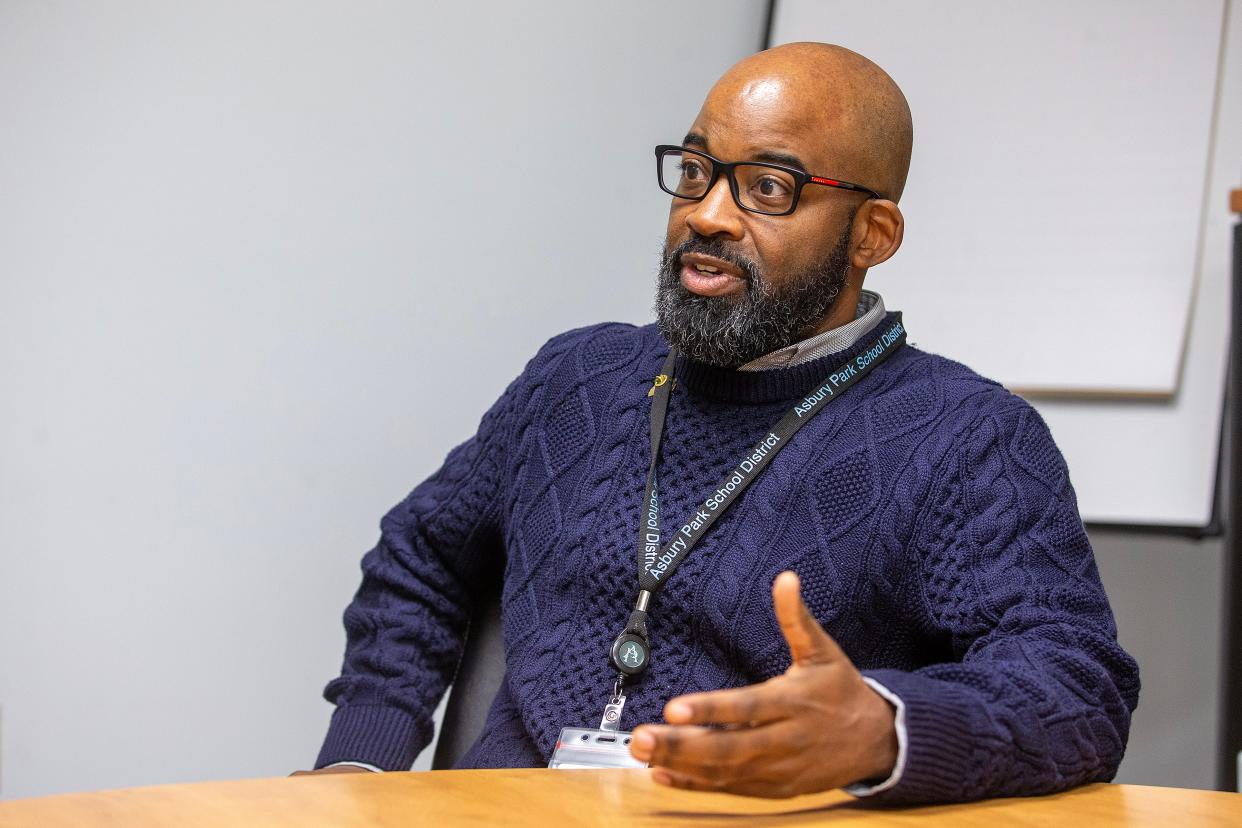
ASBURY PARK — RaShawn Adams doesn’t have a lot of allies these days. Few in his position in recent years have.
Adams serves as superintendent in one of the poorest performing school districts in the state of New Jersey — Asbury Park. He’s the fifth person to hold the position in the last decade.
And things aren't exactly going smoothly.
The state of New Jersey has stepped back from helping the district, cutting its public funding by tens of millions of dollars. The teacher’s union in the district has filed nearly three dozen complaints against him. Nearly 40% of the student body misses class on a regular basis.
These are new problems, but problems aren't new here.
“We're talking about decades, generations of academic deficiencies in this community,” said Adams, who has been in the district since 2015. “This did not start a year and a half ago. The academic and the economic blight within certain dynamics in this community did not just you know, pop up.”
They did not. The Asbury Park School District has long served a population that requires more help — academic assistance, financial assistance, language instruction — than most districts in the state. The district spends more money than most as a result, a fact that has long drawn the ire of legislators elsewhere.
Gov. Chris Christie often cited Asbury Park as the poster child for wasteful spending. For years, Asbury Park had the highest per-pupil spending rate in the state, but it seldom translated to performance.
Budget cuts: Asbury Park school staff in limbo as possible layoffs loom
More: How Jersey Shore schools lost $188 million in school funding
Little has changed there. Analysis by the Asbury Park Press shows while the district ranks fourth in per-pupil spending, it ranked last in standardized test scores in both reading and math last year.
What’s unclear is what path the district has to improve.
Last month, the state gutted the district’s budget for the fourth straight year, reducing crucial state aid by millions of dollars. The state has all but promised to do it again next year, as it enters the final year of a plan to rebalance the state funding formula.
Asbury Park is also changing in ways that will likely continue to punish the district beyond next year. Real estate is booming, data shows, but incoming residents are declining to send their children to district schools.
Enrollment, now key in how the state distributes funding, has declined by more than 25 percent in the last six years. At nearby charter schools, it's swelling.
By virtually every statistical measure, Asbury Park is a school district in decline. No one interviewed by the Asbury Park Press for this story has a firm plan to reverse its course. And analysis shows any plan that emerges faces immense hurdles.
There are more than 1,480 students currently enrolled in Asbury Park schools.
"They don’t have enough funding. They need more everything for these kids," said Frederick Whittaker, who has three children in pre-k, second and third grades.

'A lot of dissension'
Superintendent Adams, who took the helm in mid-2021, described a "sense of urgency" and blames the current issues on years of systematic problems, dwindling state aid and other challenges that face a district comprised mostly of low-income students, many with learning impediments.
District teachers, who have filed more than 35 grievances against Adams since he took over in 2021, say the superintendent has steered the schools in the wrong direction with major shake-ups and what they consider a divisive approach.
“Right now, unfortunately for the school district, it is a very hostile and combative environment at this point,” said John Napolitani, president of the Asbury Park Education Association and a veteran instructor. “It’s sad what’s happened. To see what’s happened to the school district over this period of time.”
State Sen. Vin Gopal, a Monmouth County Democrat who chairs the Senate Education Committee, has met with teachers union leaders on several related issues. He says the district needs to do more to improve what he calls "a lot of dissension."
"I have urged the Board of Education there to improve the culture," Gopal said. "These teachers are very unhappy there. It is the responsibility of the superintendent and the administration to improve the culture."
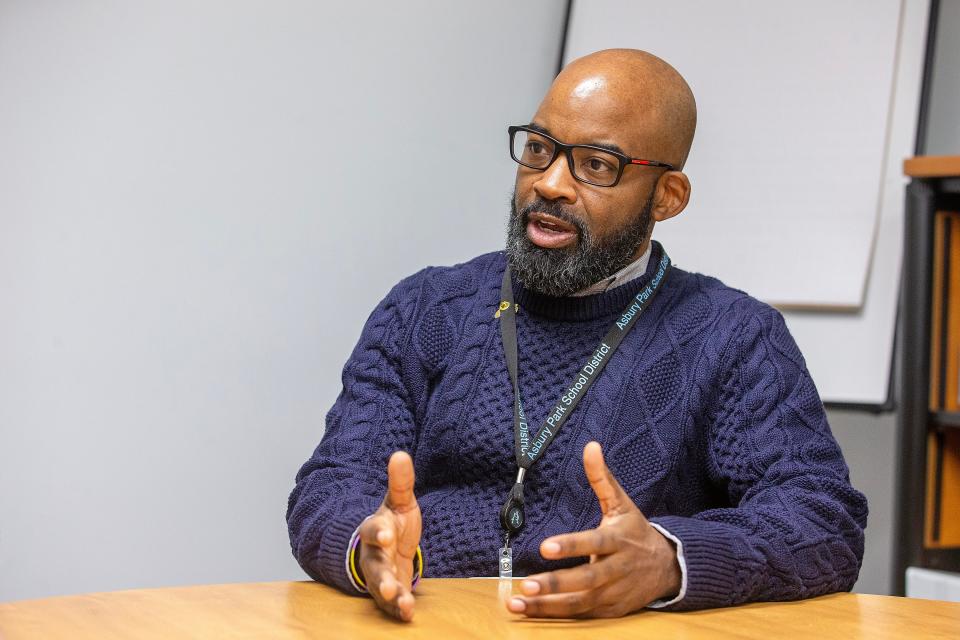
Test scores: Asbury Park ranks among lowest in school test scores, Rumson tops list
Adams countered such claims via email, stating, in part:
“Mr. Napolitani and I see the district direction from two different lenses. I have been student-centered, worked to improve the district’s procedures and practices, which are based on accountability, and sought to improve instructional practices … I will continue taking the high road and not use the media as Mr. Napolitani does by always shining negative light on the district in an effort to further his own causes … I firmly believe that Mr. Napolitani does not speak for the countless hard-working professionals in our district.”
Asbury Park Schools have also weathered a string of incidents over the past 12 months that paint a picture of a district in trouble.
Among those:
Asbury Park placed last in the first post-COVID-19 standardized tests statewide, which ranked the district 425th out of 425 districts analyzed for math and 436th out of 436 for English language arts in the statewide Student Learning Assessment score data for grades 3 through 8 in English language arts and math, released last fall.
Academic eligibility issues forced the season-opening football game to be canceled last season and another played with fewer players.
Data released by the state shows chronic absenteeism has nearly 4 out of every 10 students missing more than 10 days of school, twice the state average. More than 1 in 10 students are suspended each year.
“They lurch from crisis to crisis, in management, in governance, stable governance, support from the community and so forth,” said David Sciarra, director of the New Jersey Education Law Center, which monitors many districts and their operational issues. “There are a few districts like Asbury Park and they tend to be small ones where the community and the school board and the administration over a period of time just can’t seem to get organized to make sure they are using all of the resources they have.”
Tracy Rogers, a local parent who was recently elected to the Board of Education, agreed.
“Statistically, yes we are having issues,” he said. “That is something that I think everyone knows. I’m just coming on. I’m asking the superintendent how we are going to address these issues. I think we need to look at any options that are on the table.”
Trenton steps back
Asbury Park is suffering from severe state aid cutbacks due to State Senate Bill 2, or S2, which took effect in 2019 and realigned much of the state aid formulas. The district was among many Shore districts to see large reductions, including Toms River, Middletown and the Freehold Regional High School District.
In Asbury Park, the district saw its state aid drop from $45.1 million to $29.6 million in the past two years, while revenue from local taxes rose just over $5 million. Another $3 million in cuts was proposed this year and deeper cuts are expected next year.
A 2020 district estimate predicted Asbury Park schools would lose $26 million in state aid by 2025. That figure is more than half of Asbury Park's proposed 2022-2023 operating budget.
“We have to look at doing things differently with the financial resources that we have to sustain our student enrollment, to change the narrative on Asbury Park being a place where no one is held accountable,” Adams said. “I think I inherited a situation that most urban superintendents inherit, an urgent need to improve academic outcomes, dealing with a financial crisis.”
The cuts have already led to 31 percent staff reduction, according to data for from the district.
Some point to the state Department of Education, which they contend has not done enough to help the district that has had a state-appointed monitor since 2007.
“The problem ultimately is related to the state to actually do what is required to do and ultimately take over districts that can’t cut it on their own,” said Paul Tractenberg, founder of the Rutgers University Center for Diversity and Equality in Education. “That presumes they are getting adequate support from the state which is not the case.”
The state monitor, Carole Morris, has been in the post for nearly 10 years at a rate of $96 per hour, up to $159,744 per year paid by the district.
She did not respond to requests for comment.
In a 2014 interview, Morris said, "monitors can't force board members to work with each other. They can advise each other how to and encourage them. The underlying lack of cooperation is not something a monitor can control."
But Morris does have a say in operations and can alter board decisions on hiring, firing and how it spends its tax dollars. She has the authority to override any action by a school administrator or vote by the school board.
When the cuts first struck districts in 2019, Asbury Park was among the first to cut spending, closing the Barack Obama Elementary School, cutting seven vice principal positions, and shifting 7th and 8th grades to Asbury Park High School to consolidate space. Recently, the school board considered 19 more job cuts as it reviewed its proposed 2023-2024 spending plan, but tabled any action until May 18.
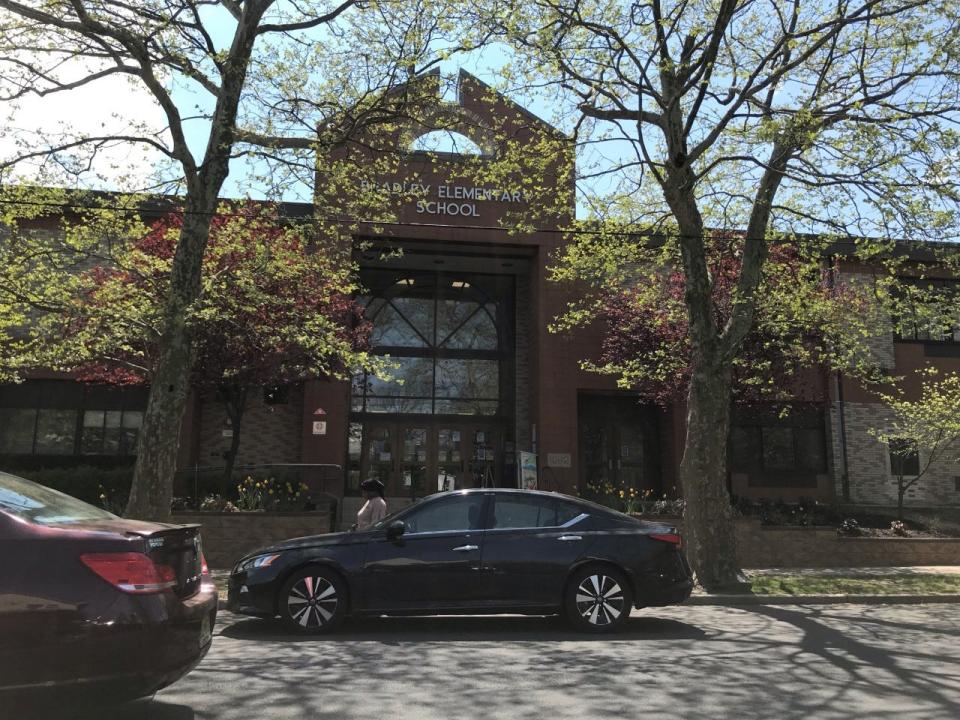
A changing district
Public school classes have been offered in Asbury Park for more than 150 years since students were first taught inside Park Hall in 1872, a year after the city was founded by business owner and future state senator James A. Bradley.
The current Asbury Park High School building opened in 1926 and has a history of athletic accomplishments that began with the 1936 New Jersey Group 4 boys basketball championship. Its graduates of note include actor Cesar Romero, former New York Jets owner and oil tycoon Leon Hess, and musician Patti Scialfa, also known as Mrs. Bruce Springsteen.
In recent years, the district stopped growing. The city is changing, officials said and data show, and it's hurting the local schools.
For one, real estate prices are booming Asbury Park, but it isn't translating to new students.
School enrollment is falling fast, dropping by 26 percent since the 2016-2017 school year. Board of Education President Carrita Cook blamed the enrollment drop, at least in part, on Asbury Park’s hot housing market and an influx of different families.
“The real estate boom in Asbury Park changed the make-up of our town, skewing our demographic towards higher income and childlessness,” she said via email. “The new people who do have kids seem to be hesitant to send their kids to a struggling school that serves predominantly black and Hispanic families, and they have the resources to send their kids to other districts.”
Three local charter schools are also offering serious competition.
Among them is College Achieve Greater Asbury Park, which received state approval in recent years to expand into high school grades and has seen its enrollment jump from 121 when it opened in 2017 to 536 today.
“We intentionally opened our school in Asbury Park and Neptune because we had one mission: to prepare historically underserved students for the best colleges and universities in the nation. That’s the reason we exist,” said Jodi Henderson McInerney, executive director of College Achieve Greater Asbury Park. "That’s how communities change and become stronger — when the school systems are excellent and provide students with the opportunity to break the cycle of intergenerational poverty. That’s what we’d like to do.”
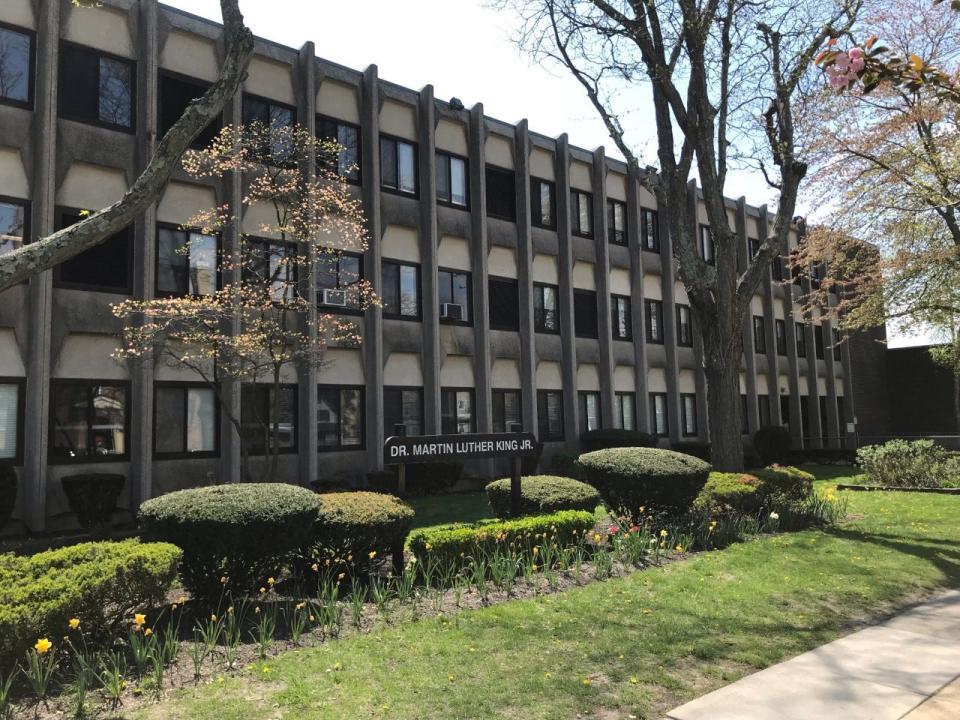
Why costs are so high
Asbury Park Schools continue to spend more per student than almost any other district in New Jersey, a fact that has made the district a political pariah in some circles.
Currently, the district spends $31,001 per student compared to the state average of $16,326, according to the state Department of Education. Asbury Park is fourth highest in the state among similar districts, behind only Avalon, Hoboken and North Wildwood.
Administrators contend the domestic and social issues facing many students require more attention, specialized instruction and, often, more spending than most other districts.
“You take this community, a mile and a half square town, that for generations has been whacked, has been locked out of access to economic opportunity, to career pathways to you name it, they've been locked out,” Adams said. “Academically, when you're also dealing with decades of underperforming, and a lack of accountability.”
It's also dealt with continuously changing leadership. Adams is the fifth superintendent in the past 10 years.
Prior to Adams, Sasha Gray held the post from January 2018 to June 2021, with Lamont Repollet at the helm before Gray from October 2014 to January 2018.
Both Gray and Repollet are now at Kean University, where Repollet serves as university president after a stint as state education commissioner from 2018 to 2020.
Before Repollet, Robert Mahon served as superintendent from July 2013 to October 2014. His predecessor, Denise Lowe, held the job from August 2009 until June 2013.
When Mahon resigned, he declared that he was "struggling to be effective" and stated he had conflicting opinions about his role.
None of the previous superintendents responded to requests for comment, other than Repollet, whose office said he would not be available to discuss the Asbury Park Schools.
Adams declined to comment on the previous leadership other than to say he has no plans to leave and should only be judged on what he does going forward, not past oversight.
“I can't speak to what my predecessors have done. I don't know those conversations. I wasn't privy to them. I know me, right. I know what I'm implementing,” he said. “So it's not like I'm here today. And, you know, I'm going tomorrow.”
Adams’ contract paid him $190,000 in 2021-2022, with a 3% raise each year through June 2026.
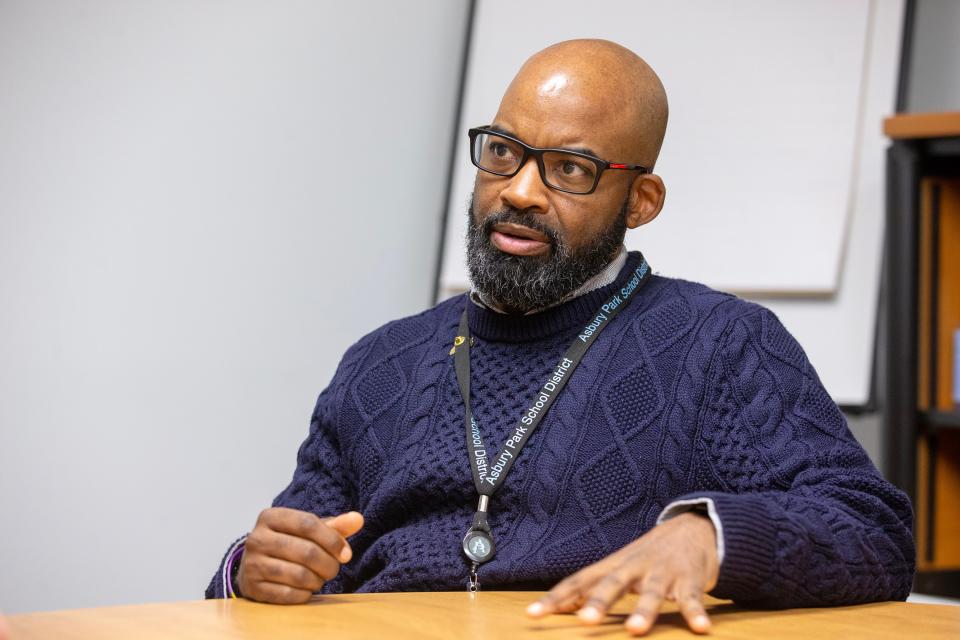
Trying to forge ahead
In the past six months, Adams says he has sought to implement some changes. The district went to a mandated uniform policy in September and recently replaced Athletic Director Mark Gerbino with Troy Bowers. In addition, a new Asbury Park High School principal, Bridget O’Neill, took over at the beginning of the school year.
“What we are focusing on under my leadership is professional development, being fiscally responsible, creating and developing student voices,” he said. “And I have three main areas: we're going to be student-centered, we're going to be process driven, and we're going to be outcome focused. And those three areas will drive what we do, we're going to be clear and effective in our communication and our expectations, as well as wrapping all those things under the tenor of accountability.”
Adams also instituted a new academic gifted and talented enrichment program for kindergarten through 6th grade, “designed to offer students a challenging and enriching learning environment that pushes academic rigor.”
A new career program in cosmetology is slated to be implemented in the fall. It will be in addition to two current programs in allied health and engineering.
One of the programs Adams touts the most is a new Student Advisory Committee, which he launched last year and meets with monthly. It includes students from every school in kindergarten through 12th grade.
“The students are your boss,” Adams said. “We can't listen to the oldest students without listening and having input from the youngest students who are still going to have to navigate their way through this system. They give me feedback on a variety of things, from school lunches, to programs to uniforms, to you name it, and it's an open dialogue.”
School uniforms: The latest clothing trend is back in Asbury Park
Joe Strupp is an award-winning journalist with 30 years’ experience who covers education and several local communities for APP.com and the Asbury Park Press. He is also the author of three books, including Killing Journalism on the state of the news media, and an adjunct media professor at Rutgers University and Fairleigh Dickinson University. Reach him at jstrupp@gannettnj.com and at 732-413-3840. Follow him on Twitter at @joestrupp
This article originally appeared on Asbury Park Press: Asbury Park Schools District, already struggling, sees funding cut

